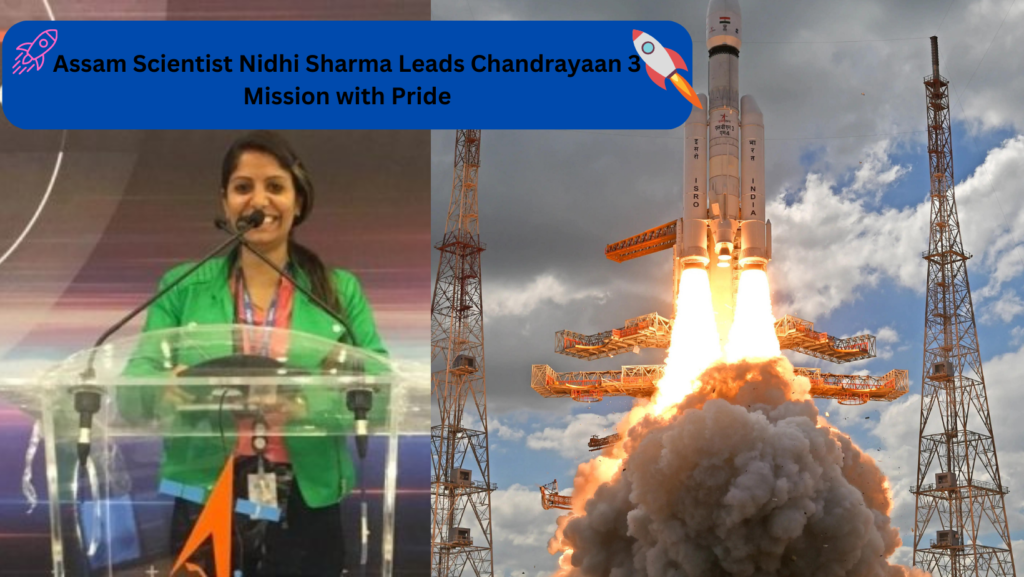A palpable sense of excitement envelops Assam’s Tinsukia as local ISRO scientist Nidhi Sharma takes the helm of the eagerly awaited Chandrayaan 3 mission.

With a decade of dedicated service to the Indian Space Research Organisation (ISRO), Nidhi Sharma steps into the spotlight once more, just as she did during the Chandrayaan 2 mission. Hailing from Tinsukia, Nidhi Sharma has deep roots in the community as the daughter-in-law of respected locals Deepak Dev and Shikha Dev. Her association with ISRO has been steadfast, marking a decade of contributions to the nation’s space exploration efforts.
Nidhi Sharma’s expertise played a pivotal role in the launch and execution of the Chandrayaan 2 mission, a moment of immense pride for her family and the Tinsukia community. Now, she stands at the forefront once more, ready to guide Chandrayaan 3 on its celestial journey.
The people of Tinsukia extend their heartfelt congratulations and best wishes to Nidhi Sharma, reaffirming their unwavering support for her and the Chandrayaan 3 mission. As India eagerly anticipates the next chapter in lunar exploration, the nation can take pride in the hometown hero leading the way.
Chandrayaan-3 mission
The Chandrayaan-3 mission, eagerly anticipated and discussed, is scheduled for a moon landing tonight. This mission takes on added significance when compared to Russia’s unsuccessful Luna-25 effort. On August 23, people from across the globe, including those in India, will be watching to witness the spacecraft’s descent onto the moon’s surface.
In a groundbreaking move, India plans to broadcast every aspect of the Chandrayaan-3 mission live on television and social media platforms. This not only showcases India’s technological capabilities but also represents a historic occasion as India aims to lead the way in landing on the uncharted lunar South Pole.
Originating from the Satish Dhawan Space Centre in Sriharikota, Andhra Pradesh, the mission began over five weeks ago. Recently, the ‘Vikram’ lander module, a crucial component, detached from its propulsion counterpart. This step allowed ‘Vikram’ to adjust its orbit, positioning it for the much-anticipated landing. Experts emphasize that the final 15 to 20 minutes will determine the success of the mission.
